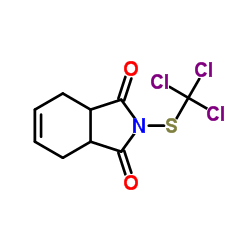Effects of captan on Apis mellifera brood development under field conditions in California almond orchards.
R Everich, C Schiller, J Whitehead, M Beavers, K Barrett
Index: J. Econ. Entomol. 102(1) , 20-9, (2009)
Full Text: HTML
Abstract
Three almond field trials were conducted during 2003 and 2004 at two locations in central (Fresno County) and northern (Yolo County) California to evaluate the potential effects of commercial applications of Captan on honey bees, Apis mellifera L. Captan was applied at 5.0 kg (AI)/ha during bloom. Hives were evaluated for hive health and brood development parameters for approximately 2 mo after application. This study showed that the application of Captan was not harmful to foraging honey bees or their brood. No treatment-related effects were noted on hive weights, dead bee deformity, number of dead bees, survival of individual larvae, weight of individual emerging adults, and other hive health parameters.
Related Compounds
| Structure | Name/CAS No. | Molecular Formula | Articles |
|---|---|---|---|
 |
captan
CAS:133-06-2 |
C9H8Cl3NO2S |
|
Determination of pesticides in sunflower seeds by high-perfo...
2014-01-01 [J. AOAC Int. 97(4) , 1012-20, (2014)] |
|
[Survey of pesticide residues in imported frozen vegetables ...
2011-01-01 [Shokuhin Eiseigaku Zasshi 52(2) , 121-9, (2011)] |
|
Toxicokinetics of captan and folpet biomarkers in orally exp...
2012-03-01 [J. Appl. Toxicol. 32(3) , 194-201, (2012)] |
|
Air pollutants formed in thermal decomposition of folpet fun...
2011-01-15 [Environ. Sci. Technol. 45(2) , 554-60, (2011)] |
|
Bacterial degradation of fungicide captan.
2010-12-22 [J. Agric. Food Chem. 58(24) , 12863-8, (2010)] |